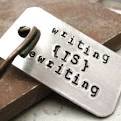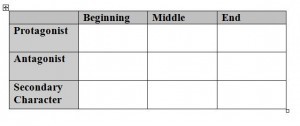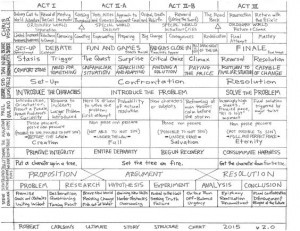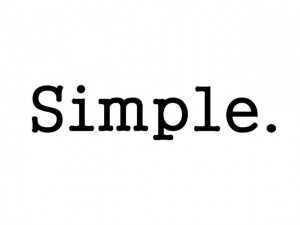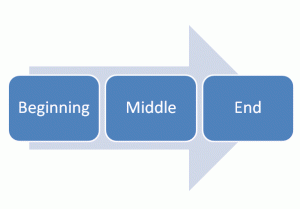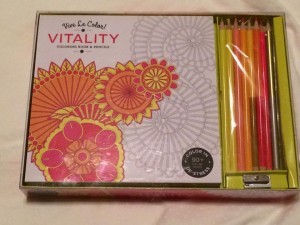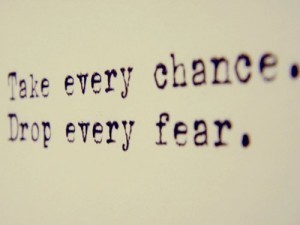Anna DeStefano's Blog
July 31, 2016
TWO Novellas FREE–Today ONLY!
My TWO #1 Best-Selling Novellas, WAITING FOR YOUR LOVE and CHRISTMAS ON BELLEVUE LANE are FREE! But only for today!
Heartwarming, sweet, FUN, FREE Summer reading from my award-winning Echoes of the Heart Series.
Both have OODLES of *****5 STAR***** Amazon reviews.
“Amazing! Anna DeStefano’s books are just so good you hate to put them down!“
Don’t miss out on your chance to see why fans LOVE the Dixon family and EVERYTHING Chandlerville, GA!
Grab WAITING FOR YOUR LOVE and CHRISTMAS ON BELLEVUE LANE FREE today.
July 15, 2016
CHRISTMAS IN JULY Free for a Limited Time!
For my friends and readers… My #1 Best-Selling Christmas on Bellevue Lane is FREE for only a few days.
Heartwarming, sweet, FUN summer reading from my award-winning Echoes of the Heart Series.
4.8 out of 5 STARs, Amazon Reviews!
Don’t miss out on this great chance to sample why fans LOVE the Dixon family and EVERYTHING Chandlerville, GA!!
July 13, 2016
How You Re-Write 3: Method over Madness
The philosophy I share with all students and editing/coaching clients? Anyone–ANYONE–can deconstruct and rewrite a manuscript. Anyone can learn to rework a story one element and scene and character at a time. Last week I shared some of my basic techniques for understanding the key characters in your completed story draft (at a high level). Click here and here for those posts, to catch up or refresh or try to niggle a bit more out of each one.
This week and next, we’re diving into the actual method of deconstructing. My method. The title of this series is HOW YOU RE-WRITE, and the overall blog category is HOW YOU WRITE. So, disclaimer time: this works for me and many of my clients and students, but the only way you’ll know if it works for you is IF YOU WORK ON REWRITING SOMETHING OF YOUR OWN. Eh-hem… Sorry, it’s a nit for me.
What’s the deal, you ask?
Just as a refresher: re-writing is hard; looking at what’s not working with your characters and plot points and themes and secondary everything can be a nerve-wracking, soul-sucking, insecurity-making exercise; and a lot of people listen but never try many of the basic, not-so-hard-to implement exercises I recommend. Which is too bad, because learning to rewrite (and we’re all ALWAYS learning, with every new project) is your job. It’s not an option. And I can’t tell you the number of clients who fade away or students whose enthusiasm wavers after a course ends or followers contact me years later to say they still haven’t finished that book they were working on back when, but they’ve started 5 new ones since…and not finished them, either.
Which is unfortunate, sad and avoidable. Just do the work (or in this case the re-work). Do it. We all have to. All of our pretty babies are drafted in the shadows of “ugly.”
It’s madness to think yours won’t, and inexcusable as an artist to let your creative drive for approval (especially your own) block you from learning and applying the craft that will better enable you to bring your unique voice and vision and stories to readers who are languishing these days, in a sea of often poorly-written, poorly constructed, badly delivered free or so-close-to-free-it-doesn’t-matter digital content.
Rant almost over. Except to say this: make what you create matter as viscerally and beautifully and impactfully (not a word, but you get the gist) as it can, by understanding it, honing it, and ruthlessly re-working it to the best of your ability.Then, once you’re done, work harder on YOUR re-writing method, so with the next project you “finished” is a story that connects with readers even more organically.
But HOW?, you ask. How do I do what you’re talking about with a full draft, when it always, ALWAYS, seems so overwhelming each time I try? Good question. I hear it a lot. I ask it of myself and my work a lot. I spend entire days and weekends giving workshops and months at a time sometimes with private coaching clients working through deconstruction and planning and re-writing approaches. Which is a long way to say this:
DISCLAIMER–these posts are overviews, folks. Rich-in-content overviews (in my honest opinion), meant to inspire you to think more directly and “simply” about parts of your project, focusing on one piece of what you’ve done at a time. These are ways to see trees instead of the overall forest. My approach will demystify what’s not working, and NOT let your off the hook for allowing flaws you sense in your work to go uncorrected–because you tell yourself it’s too complicated to revise a full manuscript. It’s not. This is my way of showing you that.
BUT, my way isn’t the only way. The goal of my work with you and all clients and students is to empower you to FIND YOUR OWN WAY.
So, take a look, take what works for you, USE IT (yes, I’m going to stop all-capping things now), and then move on to another of the lessons life is putting in your path to help you become better at what you create. But most importantly, understand that the intention of this and other re-writing posts in this series isn’t to make you an “expert.” It’s to strip away some of the stumbling blocks that can get in the way. To lower the frustration level a bit. And, because I’m a pain that way, to pop the bubble of some of your favorite excuses and rationalizations for not reworking a story into the better experience you might wish (and know) you could create.
Okay… Onward!
This week, I’ll do my best to cover the high points of a deconstruction technique that, combined with rewriting, can take me a two-day weekend workshop to teach properly. The mindset I hope to help you achieve:
No more excuses for not rewriting.
No more hiding behind “not seeing” what needs to be changed in your story.
No more big, scary book that’s too complicated to rework.
No more feeling out of control of your creativity as you rewrite!
Today’s goal is to, in a more hands-on way than last week, help you “see” the various pieces of your story more clearly--so that you’re more ready for our next topic/exercise, which is analyzing your story elements and developing an actual re-writing plan BEFORE (swears, that’s the last all-caps) you dive back in and start tinkering with things.
Because once your draft is completed, it’s time to take a look at the “layers” of story and character you’ve created.

The idea is to challenge your key story components. Ask them some questions and see how they hold up.
In re-writing Lesson 2, we discussed isolating your protagonist’s emotional journey through the book. Emotional only for those exercises, because my B-M-E Chart process focuses on the internal, psychological growth of a character at key story turning points, rather than what’s physically happening to them in the plot. A we go deeper into the method of deconstructing, let’s open your story up and look around a bit more
You can isolate and examine and then analyze almost anything.
The pieces of your plot:
Story Structure (inciting incident, turning points, midpoints, black moment, climax/resolution)
Secondary Plots
Chapter and Scene Openings and Endings
Conflict and Motivation
The characters in in your story:
Protagonist’s Arc
Antagonist’s Arc
Secondary Characters’ Arcs
Point of View
Conflict and Motivation
Backstory
Other elements:
Setting
Theme
Symbol
Repetition
Time/Sequencing
You can challenge any part of your story by visually “flagging” each piece, every time it appears. Deconstruction is about digging from the full story anything that you want to look at more closely.

You did this at a high level in Lesson 2, by focusing on only the beginning, middle and end of your protagonist’s emotional journey. I begin with the B-M-E approach when I teach students and work with coaching clients, but before long we’ll need to dig deeper.
And for that, I use (with my hard copy of the manuscript) post-it note flags. You know,those colorful things that you tag pages with. There are so many options to choose from. Select a set that strikes your fancy. Then pick one color for a single piece of your plot or a character trait, etc., that you want to understand better. Then do the following.
Pay careful attention…it’s a very difficult technique to learn (I say knowing you’re going to see the simplicity of it as soon and wonder why you should keep reading, it’s so basic).
Let’s start with something simple. For instance, you want to “see” your use of a secondary character:
Flip through your hard copy of the manuscript.
Each scene in which that character appears, flag it with a post-it note. Don’t stop and read, just flag.
Continue flipping and flagging all the way through the book. Don’t get distracted or stop and look at anything. Simply repeat this “flip flag” method until you run out of pages.
That’s it.
You’ve now officially deconstructed a secondary character’s journey through your story. You have a visual representation of and a functional means to access each instance in which that character appears. All the goodness (and likely opportunity to improve) of that character’s presence and involvement in your story is now, quite literally, at your fingertips.
The wealth of information you can now review and analyze (and the improvements you can now more easily plan to implement) can be astounding, and we’ll dig into that treasure trove in the next How You Re-Write post.
But to give you a taste of where we’re going…
Try reading the scenes you’ve flagged, and only those scenes, from the beginning of your story to the end.
Focus on the world you’ve created only from the standpoint of the secondary character. What she’s seeing, saying, doing. How she’s interacting with the lead characters, the plot, and the conflict.
Consider elements like consistency, growth. Is she essential to each scene? Is her presence relatively “flat,” or is she an essential component of the overall story in each appearance. Make notes as you go and don’t worry yet about what you’re doing. Just keep track of your thoughts, and at this point don’t succumb to the temptation to start re-writing or editing your work.
Congratulations, you’re isolating a single aspect of your novel and beginning to analyze how a part of the overall, complex whole is working.
Hard, right?
Nope. Not at all. Not until you pick another component to deconstruct, and follow it through the book without being distracted by anything else. And then another. And then another. And before long, that overwhelming feeling will begin to creep back.
Because deconstructing and analyzing is as complex as the stories we re-write. It’s not by accident that I had you work with a secondary character today. When we talk about analyzing lead characters and analysis and a lot more in future re-writing lessons, things will get tougher again. I encourage you to start small and work on less-challenging things to start, so you can master the technique first. We actually will get into analysis and re-writing technique soon, but we’ll always start small with something you can be successful out right from the start.
For today, stop the madness dig into this method and prove to yourself that you can do it. I promise, anyone can. All you have to do is decide that now’s the time to get even better at what you do, and then dive into the unknown believing in yourself and your gift and your ability to grow in your craft.
Because that’s how you write!
Related Posts
How You Re-Write 1: Revise with the B-M-E Chart
July 7, 2016
How You Re-Write 2: Actually, it’s Beginning-END-Middle…
Re-Writing Lesson 2: Taking a closer look at my recommended method for using the B-M-E Chart!
Or, if it helps you more easily remember today’s discussion… My Beginning-End-Middle Chart.
First, be sure if you haven’t to brush up on Rewriting Lesson 1, where I begin discussing my methods and philosophy for deconstructing and re-writing manuscript drafts.
Then grab all those notes you’ve made from your own Work-in-Progress, because you did your homework and have been looking at your current draft, right? Right?! And maybe you had a bit of a struggle encapsulating what’s happening with your characters at these key story turning points (Inciting Incident, Midpoint, and Black Moment). If so, welcome to the club. These aren’t high concepts most of us have nailed down when we first begin to draft.
So, let’s take another stab at it. Even if you’re happy so far with what you’ve learned about your story from using the chart, indulge me and lean into Lesson 2 and your draft with a fresh set of eyes.
The B-M-E Chart Process
Some quick definitions as we begin. Just summaries, for the sake of this exercises and post.
Inciting Incident: the first key turning point in a manuscript, when something happens that has never happened before, propelling the protagonist and antagonist together into the external flow of the story.
Midpoint: the center-most turning point in the manuscript, the tent post “propping up” the external and internal arcs of the story;the “ah-ha” moment when the protagonist realizes the “true” goal/conflict of her/his journey and pivots (through a shift in motivation) toward pursuing the objective that will drive her choices and actions for the second half of the novel.
Black Moment: the pinnacle moment where all that is at stake for the protagonist is revealed and all hope is lost if the the protagonist hasn’t learned enough throughout the story’s arc and/or isn’t ready to make the no-going-back, life-changing choice being asked of her.
Step 1: Can you isolate these turning points in your draft?
Not theoretically, not as you think back about what you meant to do with your story. Actually, physically, can you turn to these places in your printout (PLEASE, when you’re deconstructing a drafted work-in-progress, print it out and work with a hard copy. I swear, developmental/content editing is so much more effective at the analytical stage if you work with hard copy rather than scrolling through a digital copy)?
I have a method I’ll describe in a later re-write lesson for isolating specific scenes while deconstructing a novel, and how to learn the most you can from that exercise. But for now do the best you can and put your finger on when these three critical events happen to your protagonist. Not what you planned to do, or what you meant to do, but what you physically wrote as you drafted.
Step 2: Fill out your B-M-E Chart OUT OF SEQUENCE.
You heard me. I encourage my students and clients to get comfortable, once they’ve drafted their first pass at the full story, with seeing their story’s individual elements (parts) out of context. Out of sequence. Otherwise, it can be very difficult to isolate each part of your story and character’s journey. And isolating each part (in addition to seeing the whole and how well everything works together) is essential to achieving a better result when you re-write your draft.
For the B-M-E chart, I encourage out-of-sequence work because an essential key in successful storytelling, in my experience, is that the Inciting Incident and Black Moment mirror each other. These are the book-ends of your character’s journey. And as Debra Dixon tells us, the Inciting Incident (II) drives the Black Moment (BM). The II is the promise to the reader of what the story will be about (from a character standpoint, and, remember, this is a character exercise), and the BM is the pay-off. These key turning point must function separately in the flow of the story, but they’d also better function in a kick-ass way together.
As we learned in Lesson 1, filling out the B-M-E Chart is about pinpointing the emotional focus of your characters at the beginning, middle and end of your story. For the sake of this exercise, let’s use the protagonist as our example.
FIRST, define those emotional goals, motives and conflicts for the Beginning (the II). Why does she choose to take the journey of the book? What drives her to want what she wants and be willing to do what she’ll do next to get it? And how is this different than other journey’s she’s taken? Remember, for the B-M-E chart, we’re not talking about external plot, we’re focusing on the internal landscape and path the emotional character’s on. How does this character begin the journey, how will she change, and how will she be different and able to (compelled to) make better and more critical choices at the end of her journey?
THEN, define those same emotional elements for the character as she arrives at the End of her journey (the BM). Hold yourself accountable here. Don’t go off page; don’t interject what you what the BM to be about, or what you thought you did. Be honest and describe in a few sentences the actual, on-page end-point for the character’s journey.
AND ONLY THEN, define those same emotional elements for the character at the Middle (the midpoint) of her story journey.
This is how we isolate what we’ve done with a character as we draft, vs. what we meant to do, or what we think we’ve done. This is how we deconstruct.
BTW, THIS is why I have students and clients focus on only the beginning, middle and end of a draft when we first begin deconstructing. If you’ve found this process confusing at all, imagine what it would be like to try and understand the mechanics of everything you’ve created, all at once.
Ugh! See what I mean? The B-M-E chart isn’t looking so bad now, is it?
Step 3: Assess your character’s journey through the book using only the B-M-E Chart.
Congratulations, you’ve completed a high-level deconstruction of your character’s emotional arc through your story. Again, for the purpose of this lesson, let’s focus on the protagonist’s row alone in the B-M-E Chart.
Hopefully as you filled out, out of sequence, the the B-M-E Chart for your protagonist’s row, you got a whiff of where we’re going next. Which is…
First, compare where your protagonist winds up emotionally at the BM with where she began at the II. Does where she resolves her story mirror enough where she began, such that you give the reader a clear promise/path to follow with her? And yet, has she grown significantly over the course of the story, so that she’s in a different place emotionally, making more complex choices with each turning point, so that when the ultimate decision/sacrifice is asked of her at the BM, she’s poised to either succeed or (all hope is lost) fail?
Second, look at your Midpoint emotional description for your character–the change she undergoes in the tent-post moment of the external story. Is this clearly propelling her toward the emotional BM state she will be in at the end of the manuscript? At the midpoint, she can’t know everything about her journey yet (and neither can the reader), but the story must be revealing more essential parts of her character and emotional make up and revealing something new that forces her to decide to strike out on the second half of the story’s external plot, with renewed purpose and a substantially refined emotional goal.
Finally, compare your character’s emotional description at the II to where she finds herself at the Midpoint. Back it up all the way to the beginning. Now’s the time to turn your eye fully to how the story began, to see if you’re setting up the character from square one to have a robust, ever-evolving, dynamically changing arc. Because, you see, it’s all about the set up.
The Inciting Incident is the key, even though I have you focus on it last, once you’ve taken the time to look out-of-sequence at all the rest.
The beauty of having a full draft to analyze is that now you have a big picture to play with.
You have a fully-fleshed out idea to re-write into. You’re not done with your book; you’re only beginning. Because now, seeing where you want this character to end up, you can better understand what needs to happen in her journey along the way. You can refine that tent post that props up her middle, so she doesn’t sag. And you can do whatever you need to, to her beginning, such that you’re promising the reader exactly what she needs to see and believe and root for…ensuring that the reader is hooked into the character’s journey and determined to keep reader all the way to the end.
Next up!
We’ll talk next week about manuscript deconstruction analysis and how to plan your re-write, using all that you’ve learned from filling out the B-M-E Chart.
But for now, focus on the process. Practice the above with multiple manuscripts you’ve written or attempted. Practice it with published novels from your favorite author(s). Do it with a favorite movie, if that is more fun. It works for all types of story.
The key is to make yourself comfortable with seeing story and character, at least at a high level, from the standpoint of its various parts. To challenge yourself to step back from the information you gather, so that you can evaluate individual parts and pieces and how they fit together.
There’s so much more exciting work you can do with the B-M-E chart–with theme and symbol and setting and secondary plots and so forth. And, yes, we’ll get into that later as well. But for today, gift yourself with the power to think outside the box, to NOT BE intimidated by the complexity of your draft. Trust that, even though you’ll discover flaws, you can focus on key parts of your work, really understand what you’re doing and what you’re not, and prepare yourself for diving back in to make your magnificent draft even better.
Then come back next week and begin to devise a re-writing plan for improving your protagonist’s emotional arc through her story!
Because…that’s how you write ;o)
Related Posts
July 5, 2016
How You Re-Write 1: Revise with the B-M-E Chart
Re-writing is your friend. No, seriously. Re-writing is your BEST creative friend of all… Revisions, if you will. But when I teach and keynote and author coach and content edit, I make a clear distinction between line and copy editing and proof reading and the creative work of developmental editing, also known as re-writing.
And since for most of us mere mortals, our first full draft of a project rarely tumbles out of our brains fully realized, just dying to be written, part of our job–arguable the most important part of your job–is re-crafting that draft until it’s its best self. And that ain’t easy. In fact, resistance to re-working and re-writing and re-imagining the whole that’s sprouted from that kernel of an idea that drew you to write a story is the Number One reason a lot of authors never publish traditionally, and why a great deal of independently-published novels will never find a home in a reader’s heart.
Rewriting isn’t an easy friend. It’s overwhelming work, and creative fatigue and doubt and frustration can win the ensuing battle if you let them. But you’re a professional writer. Say it with me, “I’M A PROFESSIONAL WRITER.”
And your job is to take control of your creative process every step of the way. And for the purposes of this How You Write post, your job is to rewrite your draft for however long it takes for the story and characters and journeys you’ve created to connect with the reader on every level possible. You’re the boss, not the draft. You’re ready to work through the exhausting process of diving back in over and over. Really, you are ;o)
The way to do that?
Simple.
No, the process isn’t simple. But you job is, so to speak. All you have to do is break your draft down into simple parts, so you can effectively execute the work left to be done in manageable chunks.
When you’re drafting with a plan (and you have a plan, right?) or rewriting with plan (because you revamp your plan for your story before you rewrite, right?), you give yourself a chance to conquer the overwhelming, sinking feeling that you can’t succeed at something as complex as creating a novel. You allow yourself to focus on one piece of the story at a time, until the whole manuscript finally begins to take shape. But what is your re-writing plan???
I’ll get more specific about my re-writing approach in my twice-weekly July How You Write blog updates. But for now, accept for the sake of argument that writing is a process (while creativity and voice and the compulsion to share story with the world through the written word is a gift, bless you heart…). And as part of that process, re-writing can be learned and executed and mastered by anyone determined get better at her/his craft.
To help simplify things today as we dip our toe into re-writing…
I encourage every new student and client to do what I do with a freshly drafted first pass at a story–focus on the beginning, middle, and end of your characters’ journeys, as you deconstruct what you’ve achieved with your novel. Before you rewrite the first word, you first have to understand (to “conquer”) what you’ve already written.
First up! I teach students and clients to pinpoint the emotional focus of a character at the inciting incident of a story, at the midpoint, and at the black moment.
Make a chart (easily done in Word or Excel or freehand on a notepad). A simple one, with a row for your protagonist, your antagonist and perhaps one significant secondary character. Three columns: Beginning, Middle, End.
Then read through those three key turning points in your story draft (inciting incident, midpoint and black moment) and see if you can define the state of each character’s internal journey. Jot down only a sentence or two for each turning point and each character. You should be able to summarize very specifically how a character is growing or wanting to change at each critical juncture. Once you’re done, take a look…
Is each character’s emotional state dynamic and arcing throughout the story?
Is the character needing/aware of/wanting/determined to have progressively more vital things to her/him as she/he progresses through the story?
Or is she/he an emotional flat-line, driving forward in the same emotional state, to achieve the same “vision” of victory/success, at each turning point?
If the later is true (or if you find gaps in your chart because you can’t determine a particular character’s emotional focus in one of these key places in your story), take a closer look at what’s happening between the B-M-E turning points.
What can you learn from your draft about the new work needing to be done for your character’s journey? Why is it that your character isn’t yet coming fully to life for the reader?
Take tons of notes at this point, but DO NOT BEGIN RE-WRITING…
So, yeah, you got me ;o)
This isn’t actually a lesson about how to re-write.
What we’re talking about today is how to deconstruct and figure out WHAT needs to be rewritten for ONE story element–character. I call it my B-M-E Exercise. There are other parts of the story you’ll need to analyze and make decisions about before you tackle your next draft. But I encourage my students and clients to begin with character.
Why character first?
Because character is story. And it’s my experience with the 27 novels I’ve rewritten and stream of authors I’ve taught and mentored and coached and edited for, that no matter how good your writing or how exciting your external plot…if the reader can’t connect with your characters emotionally and root for your protagonist’s victory because her/his story is so real, it’s impossible not to, then the story will suffer and be so much less than it could be.
Don’t let that happen with your draft. No matter how much experience you have, the B-M-E approach to deconstructing character character arc is a good first-step to take once a draft is done. I do it with every novel I write.
I could get more specific (and I will in later posts), and talk terms like goal, motivation and conflict. But for this first step, do yourself a favor and map out only emotions. Where your character’s head is, how that’s affecting the way she/he sees his world, and how a character’s emotional journey shifts and change (or currently doesn’t) over the course of your story. This is a goldmine of information you likely couldn’t have had when you first began to draft, no matter how much planning you did. These are the amazing things we discover as we draft…and now it’s time to harness that rich goodness and see where it will take you creatively as you re-write forward!
Simple, right?
I’ll delve deeper into the mechanics of using the B-M-E chart next post, giving examples. I also encourage a unique approach to filling the chart out. That’s right. I don’t want you reading the book through in sequence… I’m going to ask you to move around and focus on out-of-sequence chunks as you “investigate” your character’s emotional arc. But that’s for my next post this week.
Try it for yourself first, so you have a better feel for the crux of the process. Make your chart, grab a hard copy of your book (yes, PLEASE consider working with a printout of your draft as you deconstruct for re-writing), and dive back into what you’ve done, empowered to conquer your process and put what you innately know about story to work for you!
Because…that’s how YOU write ;o)
How You Re-Write: Revise with the B-M-E Chart
Re-writing is your friend. No, seriously. Re-writing is your BEST creative friend of all… Revisions, if you will. But when I teach and keynote and author coach and content edit, I make a clear distinction between line and copy editing and proof reading and the creative work of developmental editing, also known as re-writing.
And since for most of us mere mortals, our first full draft of a project rarely tumbles out of our brains fully realized, just dying to be written, part of our job–arguable the most important part of your job–is re-crafting that draft until it’s its best self. And that ain’t easy. In fact, resistance to re-working and re-writing and re-imagining the whole that’s sprouted from that kernel of an idea that drew you to write a story is the Number One reason a lot of authors never publish traditionally, and why a great deal of independently-published novels will never find a home in a reader’s heart.
Rewriting isn’t an easy friend. It’s overwhelming work, and creative fatigue and doubt and frustration can win the ensuing battle if you let them. But you’re a professional writer. Say it with me, “I’M A PROFESSIONAL WRITER.”
And your job is to take control of your creative process every step of the way. And for the purposes of this How You Write post, your job is to rewrite your draft for however long it takes for the story and characters and journeys you’ve created to connect with the reader on every level possible. You’re the boss, not the draft. You’re ready to work through the exhausting process of diving back in over and over. Really, you are ;o)
The way to do that?
Simple.
No, the process isn’t simple. But you job is, so to speak. All you have to do is break your draft down into simple parts, so you can effectively execute the work left to be done in manageable chunks.
When you’re drafting with a plan (and you have a plan, right?) or rewriting with plan (because you revamp your plan for your story before you rewrite, right?), you give yourself a chance to conquer the overwhelming, sinking feeling that you can’t succeed at something as complex as creating a novel. You allow yourself to focus on one piece of the story at a time, until the whole manuscript finally begins to take shape. But what is your re-writing plan???
I’ll get more specific about my re-writing approach in my twice-weekly July How You Write blog updates. But for now, accept for the sake of argument that writing is a process (while creativity and voice and the compulsion to share story with the world through the written word is a gift, bless you heart…). And as part of that process, re-writing can be learned and executed and mastered by anyone determined get better at her/his craft.
To help simplify things today as we dip our toe into re-writing…
I encourage every new student and client to do what I do with a freshly drafted first pass at a story–focus on the beginning, middle, and end of your characters’ journeys, as you deconstruct what you’ve achieved with your novel. Before you rewrite the first word, you first have to understand (to “conquer”) what you’ve already written.
First up! I teach students and clients to pinpoint the emotional focus of a character at the inciting incident of a story, at the midpoint, and at the black moment.
Make a chart (easily done in Word or Excel or freehand on a notepad). A simple one, with a row for your protagonist, your antagonist and perhaps one significant secondary character. Three columns: Beginning, Middle, End.
Then read through those three key turning points in your story draft (inciting incident, midpoint and black moment) and see if you can define the state of each character’s internal journey. Jot down only a sentence or two for each turning point and each character. You should be able to summarize very specifically how a character is growing or wanting to change at each critical juncture. Once you’re done, take a look…
Is each character’s emotional state dynamic and arcing throughout the story?
Is the character needing/aware of/wanting/determined to have progressively more vital things to her/him as she/he progresses through the story?
Or is she/he an emotional flat-line, driving forward in the same emotional state, to achieve the same “vision” of victory/success, at each turning point?
If the later is true (or if you find gaps in your chart because you can’t determine a particular character’s emotional focus in one of these key places in your story), take a closer look at what’s happening between the B-M-E turning points.
What can you learn from your draft about the new work needing to be done for your character’s journey? Why is it that your character isn’t yet coming fully to life for the reader?
Take tons of notes at this point, but DO NOT BEGIN RE-WRITING…
So, yeah, you got me ;o)
This isn’t actually a lesson about how to re-write.
What we’re talking about today is how to deconstruct and figure out WHAT needs to be rewritten for ONE story element–character. I call it my B-M-E Exercise. There are other parts of the story you’ll need to analyze and make decisions about before you tackle your next draft. But I encourage my students and clients to begin with character.
Why character first?
Because character is story. And it’s my experience with the 27 novels I’ve rewritten and stream of authors I’ve taught and mentored and coached and edited for, that no matter how good your writing or how exciting your external plot…if the reader can’t connect with your characters emotionally and root for your protagonist’s victory because her/his story is so real, it’s impossible not to, then the story will suffer and be so much less than it could be.
Don’t let that happen with your draft. No matter how much experience you have, the B-M-E approach to deconstructing character character arc is a good first-step to take once a draft is done. I do it with every novel I write.
I could get more specific (and I will in later posts), and talk terms like goal, motivation and conflict. But for this first step, do yourself a favor and map out only emotions. Where your character’s head is, how that’s affecting the way she/he sees his world, and how a character’s emotional journey shifts and change (or currently doesn’t) over the course of your story. This is a goldmine of information you likely couldn’t have had when you first began to draft, no matter how much planning you did. These are the amazing things we discover as we draft…and now it’s time to harness that rich goodness and see where it will take you creatively as you re-write forward!
Simple, right?
I’ll delve deeper into the mechanics of using the B-M-E chart next post, giving examples. I also encourage a unique approach to filling the chart out. That’s right. I don’t want you reading the book through in sequence… I’m going to ask you to move around and focus on out-of-sequence chunks as you “investigate” your character’s emotional arc. But that’s for my next post this week.
Try it for yourself first, so you have a better feel for the crux of the process. Make your chart, grab a hard copy of your book (yes, PLEASE consider working with a printout of your draft as you deconstruct for re-writing), and dive back into what you’ve done, empowered to conquer your process and put what you innately know about story to work for you!
Because…that’s how YOU write ;o)
June 7, 2016
5 STAR Amazon Ranking Celebration GIVEAWAY… WIN Summer Fun!
“Very well written and an amazing cast of characters. I loved every minute of the book and hated to see it end…”
We’re celebrating WAITING FOR YOUR LOVE’s 5 STAR Amazon Ranking with another giveaway!
Who wants to WIN this Summer-Themed Coloring Set (isn’t it ADORABLE!) and a digital copy of WAITING FOR YOUR LOVE?
Even in my novellas, character is everything for me.
I sweat all the details, work my tail off with my editor to pick and choose just the right characteristics and actions and motivation and reactions will showcase the two leads and as many secondary characters as I can pack into the story ;o) Pacing and plot zoom you through what you’re reading. But in my books it’s always the characters you remember most, long after your done.
To be in the giveaway, comment about your favorite character(s) in the story you know will stay with you forever! You can also leave a comment on my Facebook Page Giveaway Post for a second chance to win!
Winner announced tomorrow, when I post the next release giveaway.
Keep checking back all week for more chances to win…
Oh, and snap up WAITING FOR YOU LOVE now for ONLY 99 CENTS! It’s already racking up 5 Star Reviews on Amazon
***
“ Sweet, sassy, ADORABLE summer fun!”
Friends to lovers should be the sweetest romance of all…
So how did Clair Summerville get herself into such a mess—pretend dating Conrad Lancaster of all people at her family reunion?
Clair can’t lose their life-long friendship. She and Conrad have always been there for each other, no matter how complicated their separate worlds have gotten. Now they’re playing with fire. And one of her best girlfriends, Bethany Darling (from His Darling Bride), is fanning the flames.
Of course kissing and cuddling like lovers in front of Claire’s nosy, controlling family leads to suspiciously “real” couple behavior in private. But no way can she reveal her true feelings for Conrad. Not with her survival instincts clamoring at DEFCON 1.
Clair’s desperate to cut and run, the way she has with every other guy she’s come close to trusting with her heart.
Except this is Conrad. She’s been secretly in love with him and his little boy, Harper, for years. And this is Chandlerville, Georgia, where neighbors have a pesky habit of pitching in—whether you ask them to or not—to make dreams come true. Especially the dreams you want so badly, they shake you to your core.
Looks like these made-for-each-other loners have everything they need to win their long-overdue happily ever after… If only they’d risk their tender hearts one more time.
Or will Clair and Conrad lose their last chance to fight for each other’s love?
The Big, Bad UGLY We Don’t Talk About: EARLY WRITING
How to explain how planning and prepping and early drafting for a new novel feels…?
It’s like finding out you’re pregnant, I guess, and wondering what your new baby will be like. Or graduating from college, hoping and dreaming about that first/new job. Or meeting the man/woman you think will be your soul mate, and wondering if your life together could really be that amazing.
Or, if you’re an angsty writer not liking not knowing if what you’re doing is going to suck EGGS, like this.
Or this.
Or this.
I’ve written 27 wildly successful novels, by many’s standards. I’ve often made a living creating something out of nothing. Which is decidedly more often, lucky me, than most who get a hankering to write a book and embark on the crazy journey I’m on.
How can I still be so nervous? Worried? Troubled to my very core, so much so that I can’t really write deeply yet, because all the reflections on the surface keep shimmering in and out and away from me, too quickly for me to see clearly.
You know you want to do what you’re doing. You’re dying to get see what the beautiful thing your creating will be, once it’s done. And you’re petrified. You’re feeling less than. You’re stumped as to how anyone could possibly think you could do this. Or is it just me?
We sense the danger of being wrong, of failing, of not living up, I think.
We focus on what others will think or say or NOT feel. We focus on our on inner toxic voices, perhaps fed by those who raised or taunted or bullied us in the past, listening to You Can’t, So Why Bother Trying.
And yet, fear shows us what we want most. It gives us our greatest chance to succeed, if we rise instead of ducking or crumbling.
When we’re beginning something so terrifying, we’re immobilized with fear, it’s a call to action. That panic and temporary paralysis a battle cry. It’s our gift to ourselves–because NOW we know where to focus all that pent up energy.
At least that’s how I flounder through the early weeks/months of a new novel draft. Yes, it’s slow going.
Yes, I sometimes feel like I’m wasting my time and my talent and my career. Am I doing my very best by the trust and faith everyone’s placing in me to pull this off again? But I’ve learned over the years that that’s just me. That’s what it’s like, this early writing that I always have to do before I get to the chewy, lovely, deep and happy place that always comes back somewhere between Chapter 1 and The End.
And for those of you who say, “I’m not a writer,” this is about you, too.
You and every early, new beginning you have.
Challenges await us. And the more we want something, the harder we often must fight to battle back from the fear of even trying.

We must seek, not hide. We must fight, not surrender. We must want, not give up.
And if we do, that amazing thing we were meant to be will be found.
“Nothing is lost… Everything is transformed.” ~Michael Ende, The Neverending Story
Transform with me today, won’t you?
June 6, 2016
RELEASE Celebration Giveaways: ADORABLE Mugs Up for Grabs!
WAITING FOR YOUR LOVE is out and it’s time to PARTY 
Who wants to WIN this ADORABLE set of mugs?
As soon as I saw them, I could just picture Clair Summerville and Conrad Lancaster sharing their morning coffee and smiling over the brims ;o)
I hope WAITING FOR YOUR LOVE becomes your FAVORITE friends-to-Lovers romance. I know it is mine!
For your chance to win Clair and Conrad’s story, leave a comment in THIS POST, or on my FACEBOOK PAGE Giveaway Post, about a favorite friends-to-lovers story you experiences or watched blossom.
Winner announced tomorrow, when I post the next release giveaway!
Keep checking back all week for more chances to win…
Oh, and snap up WAITING FOR YOU LOVE now for ONLY 99 CENTS! It’s already racking up 5 Star Reviews on Amazon
***
“ Sweet, sassy, ADORABLE summer fun!”
Friends to lovers should be the sweetest romance of all…
So how did Clair Summerville get herself into such a mess—pretend dating Conrad Lancaster of all people at her family reunion?
Clair can’t lose their life-long friendship. She and Conrad have always been there for each other, no matter how complicated their separate worlds have gotten. Now they’re playing with fire. And one of her best girlfriends, Bethany Darling (from His Darling Bride), is fanning the flames.
Of course kissing and cuddling like lovers in front of Claire’s nosy, controlling family leads to suspiciously “real” couple behavior in private. But no way can she reveal her true feelings for Conrad. Not with her survival instincts clamoring at DEFCON 1.
Clair’s desperate to cut and run, the way she has with every other guy she’s come close to trusting with her heart.
Except this is Conrad. She’s been secretly in love with him and his little boy, Harper, for years. And this is Chandlerville, Georgia, where neighbors have a pesky habit of pitching in—whether you ask them to or not—to make dreams come true. Especially the dreams you want so badly, they shake you to your core.
Looks like these made-for-each-other loners have everything they need to win their long-overdue happily ever after… If only they’d risk their tender hearts one more time.
Or will Clair and Conrad lose their last chance to fight for each other’s love?
June 4, 2016
WIN the Entire ECHOES OF THE HEART Series!
We’re celebrating Monday’s WAITING FOR YOUR LOVE release early with a FOUR-BOOK GIVEAWAY  WIN the entire Echoes of the Heart Series to date!
WIN the entire Echoes of the Heart Series to date!
To win DIGITAL copies of Here in My Heart, Let Me Love You Again, and Christmas on Bellevue Lane…and a PRINT copy of His Darling Bride–comment with the name of your FAVORITE novel series and let us know why it’s so special to you.
Winner announced on WAITING FOR YOUR LOVE’s release day: Monday, June 6th.
All you have to do is comment to be eligible!
Then visit my blog daily
and follow me on Facebook (at my Author Page )
all next week and beyond, for more fun chances to win…
***
Releasing June 6th, 20016
“Sweet, sassy, ADORABLE summer fun!”
Friends to lovers should be the sweetest romance of all…
So how did Clair Summerville get herself into such a mess—pretend dating Conrad Lancaster of all people at her family reunion?
Clair can’t lose their life-long friendship. She and Conrad have always been there for each other, no matter how complicated their separate worlds have gotten. Now they’re playing with fire. And one of her best girlfriends, Bethany Darling (from His Darling Bride), is fanning the flames.
Of course kissing and cuddling like lovers in front of Claire’s nosy, controlling family leads to suspiciously “real” couple behavior in private. But no way can she reveal her true feelings for Conrad. Not with her survival instincts clamoring at DEFCON 1.
Clair’s desperate to cut and run, the way she has with every other guy she’s come close to trusting with her heart.
Except this is Conrad. She’s been secretly in love with him and his little boy, Harper, for years. And this is Chandlerville, Georgia, where neighbors have a pesky habit of pitching in—whether you ask them to or not—to make dreams come true. Especially the dreams you want so badly, they shake you to your core.
Looks like these made-for-each-other loners have everything they need to win their long-overdue happily ever after… If only they’d risk their tender hearts one more time.
Or will Clair and Conrad lose their last chance to fight for each other’s love?



